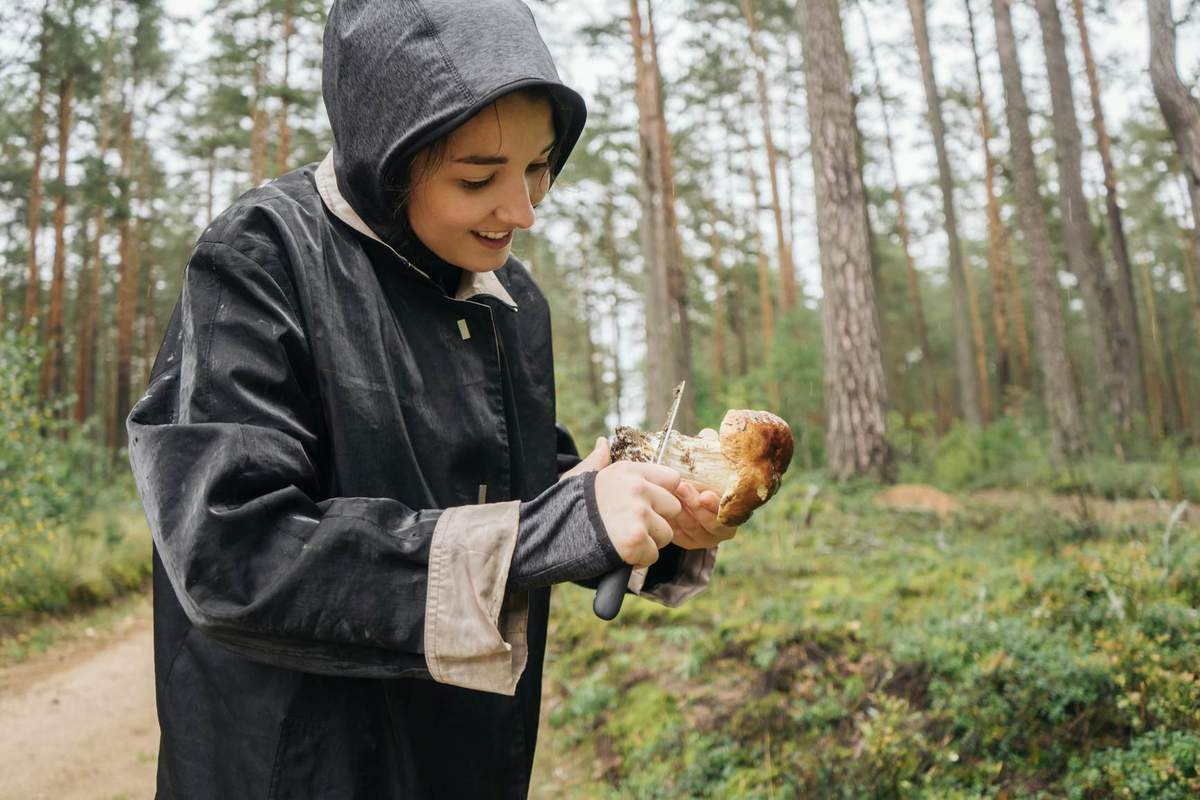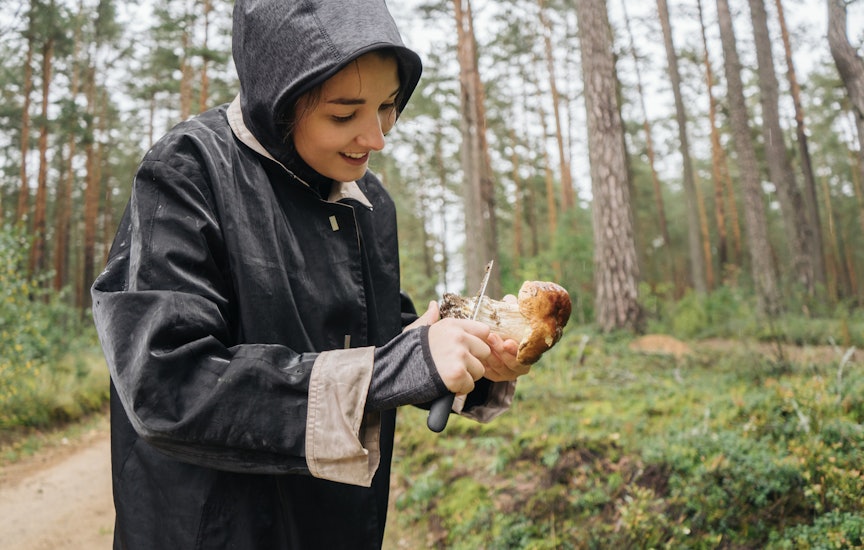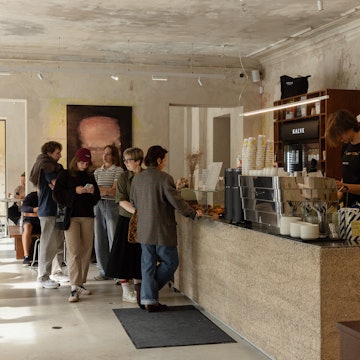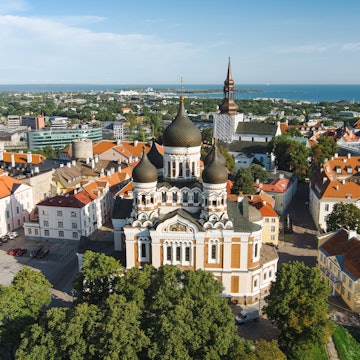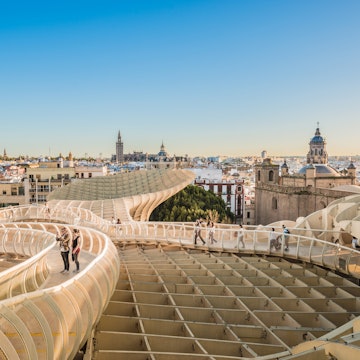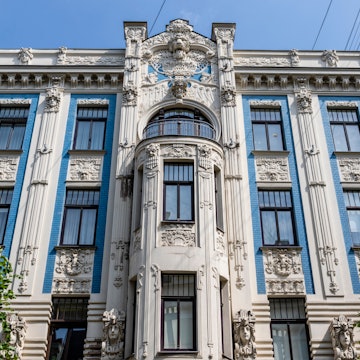

From budgeting to planning what you'll do once you're there, here are our tips for first-time visitors to Estonia © George Trumpeter / Shutterstock
The northernmost country of the three Baltic States may be small and sparsely populated, yet Estonia’s wild landscapes and fascinating history offer a unique combination of nature and culture.
Over half of Estonia’s surface is covered by forests and a third of the population lives in Tallinn, the capital, leaving most of the territory dotted by small settlements surrounded by trees. Still, it would be wrong to think that the country lacks diversity – bogs, lakes and over 1200km (7456 miles) of coastline facing thousands of islands that emerge from cold Baltic waters make the outdoors well worth exploring.
Tallinn and Tartu, Estonia’s two largest cities, lead the cultural heritage. The capital was an important trading center, part of the German-led Hanseatic League, during the Middle Ages and is still one of the best-preserved medieval cities in Northern Europe. Charming Tartu, nominated European Capital of Culture in 2024, is home to Estonia’s first and most prestigious university, which has been cultivating great minds since the 17th century.

When should I go to Estonia?
In short, summer. The warmer months of the year, between June and August offer endless days for exploring cities and the countryside. The sun hardly sets at this time of the year and while the weather is unpredictable, you’ll have the highest chances of avoiding rain.
These are particularly good months if you plan to spend much time outdoors, maybe cycling around the islands of Estonia’s Western Archipelago or hiking a section of the Baltic Trails. Many music festivals, such as Viljandi’s Folk Music Festival or Setomaa’s Treski Festival, take place in July and August.
Estonian winters are famously harsh, but the Christmas atmosphere livens up Tallinn and Tartu in December with markets and ice-skating rinks that transform the historic centers into festive playgrounds. Outside of bigger cities, driving can be risky, as snow and ice cover many of the countryside roads. Plus, the darkness doesn’t help, unless you plan on seeking a rare view of the northern lights.
In spring the weather is unpredictable, but you’ll also have a chance to encounter a unique natural phenomenon. Between March and April, Soomaa National Park experiences the “fifth season” – floods cover the park transforming it into a kayaking playground for a few weeks.
On June 24, Estonia celebrates Jaanipäev (Midsummer) to welcome the arrival of summer. This is one of the oldest and most awaited traditions in the country, marked by huge fires set up across the rural areas.

How much time should I spend in Estonia?
The vast majority of people who visit Estonia only spend a weekend in Tallinn, often arriving via the daily ferries that connect the capital with Helsinki on the opposite side of the Gulf of Finland. Besides its photogenic medieval core, Tallinn extends beyond its defensive walls. The city is home to over 50 museums, including world-class institutions such as Kumu and Seaplane Harbour, the creative quarter of Telliskivi, long beaches and the Imperial park of Kadriorg. A couple of days are hardly enough to take it all in.
By adding an extra day or two to your Tallinn trip, you could include a day trip to the vast Lahemaa National Park, Estonia’s largest nature reserve where bog walks, tree-lined cycling routes, 19th-century manor houses and even a former Soviet submarine base await.
If you have more time, you can explore beyond the capital. A full week will allow you to cover much of the mainland. Tartu, Estonia’s second city in the southern part of the country, is a two-hour drive away from Tallinn and from there you can easily reach both the shore of Lake Peipsi and the coast of the Baltic Sea in a matter of hours before looping back to the capital.
Want to see more of the region? Follow this epic hiking trail through Estonia, Latvia and Lithuania
Is it easy to get in and around in Estonia?
The main entry point to Estonia is Tallinn. The capital’s airport connects to many European cities daily and is located a 25-minute bus ride from Old Town.
Once you are in Estonia, you can easily move around with public transport. While renting a car will provide the maximum freedom of movement, Estonia has an efficient rail and bus network, which allows you to reach nearly every corner of the country for just a few euros.
Trains run along the northern coast to Narva and south to Tartu, Viljandi and Valga, on the border with Latvia. Buses go everywhere else, including to the two main islands of the archipelago, Saaremaa and Hiiumaa.
8 of the best things to do in Estonia

1. Explore Tallinn’s Old Town
Spend a day or two exploring the two sides of Tallinn’s Old Town, starting from the Town Hall Square in the lower part and moving up to the elevated Toompea Castle. Seek the traces left behind by the merchants of the Hanseatic League in the Great Guild Hall then enter the onion-domed Alexander Nevsky Cathedral and continue to the Niguliste Museum, housed inside the Gothic St Nicholas Church.
2. See traditional architecture at the Estonian Open Air Museum
Located 7.5km (4.6 miles) west of Tallinn’s Old Town, the Estonian Open Air Museum preserves authentic houses from different regions of Estonia in a 70-hectare park once part of the Rocca al Mare private estate. As you stroll through the museum, you’ll encounter log houses typical of the Orthodox communities of Lake Peipsi, temporary homes used by the semi-nomadic fishers of Hiiumaa, wooden windmills, chapels dating as far back as the late 17th century and a Soviet-era southern Estonian kolkhoz (collective farm), which have been moved here from their original location.
3. Enter a submarine at Seaplane Harbour
Under the three concrete domes of the 1917 hangar known as Seaplane Harbour, you'll find one of Europe’s most intriguing maritime museums. Celebrating Estonia’s long-standing relationship with the sea, this dimly-lit place exhibits historic vessels used to explore the Baltic, both above and below water. A large section of the hangar is occupied by the 59.5m-long (195ft) Lembit submarine, built in the UK between 1935 and 1937 for the Estonian Navy. The Lembit is the only Estonian warship constructed before WWII to have survived to the present day. You can enter its claustrophobia-inducing interiors to experience life below the waterline and walk through the vessel’s eight sections, from engine rooms to sleeping quarters.
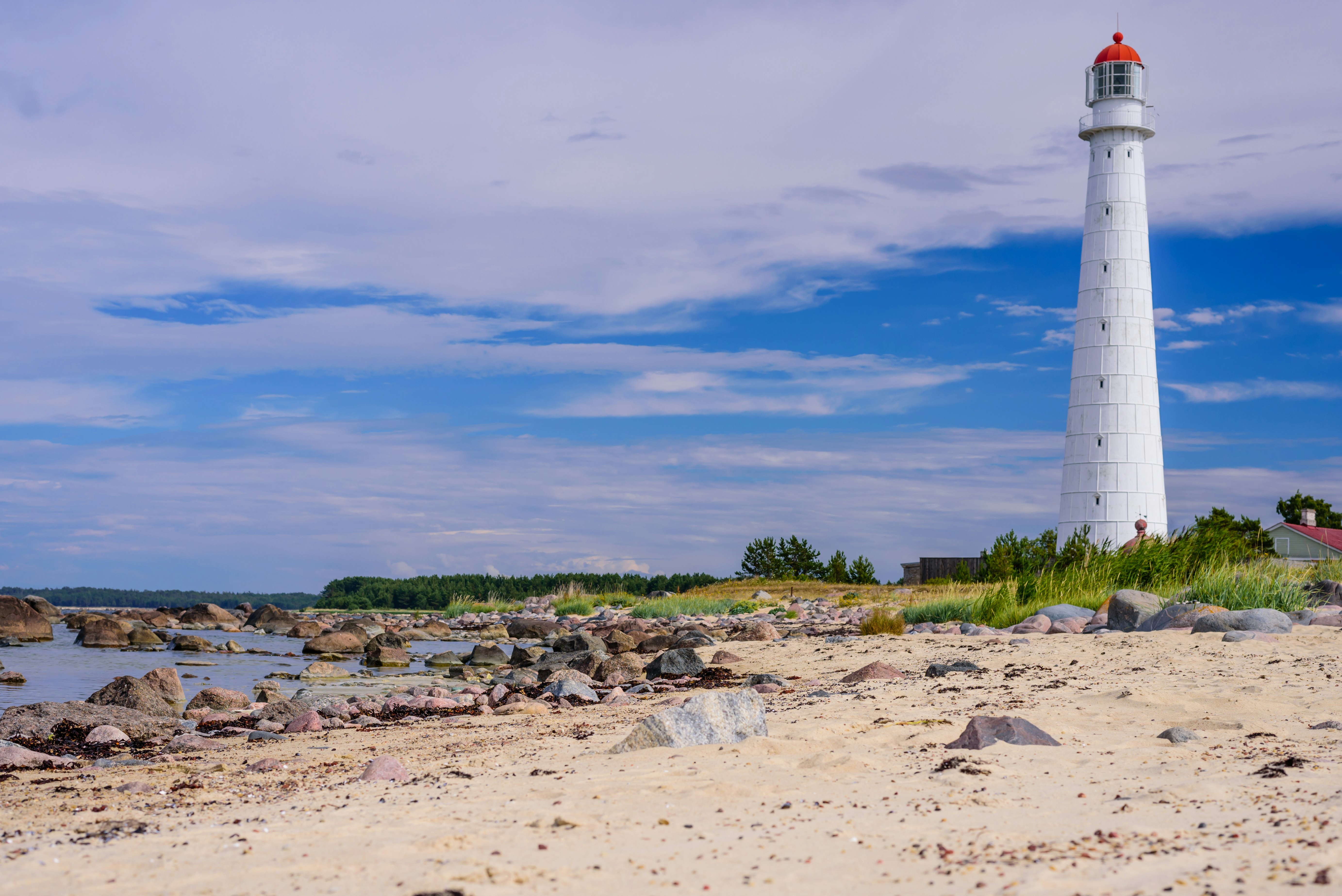
4. Go cycling and lighthouse spotting in Hiiuuma
Travel to Rohuküla and take the ferry to Hiiuuma, the second island of the West Estonian Archipelago mostly covered by forests part of the UNESCO Biosphere Reserve. The island is mostly flat and, when the weather allows, it is easily explored by bike, available for rent in Kärdla. Tour quirky lighthouses and remnants of WWII scattered along the coast of this wild island emerging from the Baltic Sea.
5. Visit medieval castles
Many ancient castles are scattered around Estonia, some of the most impressive are found in Haapsalu, in Kuressaare and in Viljandi. The foundation of Haapsalu’s castle dates back to the 13th century, when the local nobility commissioned the construction of a new fortress and church to function as the new seat of the Roman Catholic Bishopric of Ösel–Wiek. Despite the ruinous state of its outer walls, Haapsalu’s castle stands as one of the best-preserved medieval strongholds in Estonia. Kuressare’s square stronghold, first mentioned in the 14th century, dominates the skyline of Saaremaa’s capital, while Viljandi’s castle, founded by the German Knights of the Catholic Teutonic Order in 1224, offers spectacular views over the nearby lake.
6. Take a stroll on Tartu’s Toomemägi
Crisscrossed by paths, leafy Toomemägi – Cathedral Hill – is considered Tartu’s birthplace. Forming the backdrop of Town Hall Square, it makes for a pleasant stroll among some of Tartu’s most important cultural sites, with views of the city to match.
Visit the Gothic skeleton of Tartu Cathedral, the largest in Estonia built in the 13th century when the Knights of the Livonian Order conquered Tartu’s core, then stop at the Old Observatory where German-Russian astronomer Friedrich Georg Wilhelm von Struve worked, building the initial point of the UNESCO-inscribed Struve Geodetic Arc.
Last but not least, stop for a beer at the Gunpowder Cellar (Püssirohukelder) excavated in Toomemägi in 1778 to house the Russian Empire’s stock of gunpowder, now a huge pub.
7. Learn about Estonia’s history at Tartu’s Estonian National Museum
The impressive glass-clad building in Raadi Park that forms the Estonian National Museum houses over 140,000 objects that trace the history of Estonian customs and traditions. You could spend a whole day roaming the tall-ceiling halls of this modern museum that opened in 2016 and showcases artifacts meant to represent the everyday life of Estonians throughout the ages. Especially intriguing is the permanent “Echo of the Urals” exhibition that explores the connections and roots of Finno-Ugric speaking communities around the world.
8. Tour Narva’s Kreenholm Factory
If you get to Narva, right on the Russian border, book a tour of the massive Kreenholm Factory, once the largest cotton mill in the Russian Empire. This huge brick complex was established in 1857 by German industrialist Baron Johann Ludwig von Knoop and would eventually employ over 10,000 workers responsible for over 10% of the whole Russian Empire’s cotton output. It transformed Narva into one of the world’s most important textile centers. Guided tours are run by the Narva Museum every Sunday.

My favorite thing to do in Estonia
One of the most memorable experiences I had while traveling through Estonia to write Lonely Planet’s new guide to the Baltic Countries was getting to know the Seto people that live in the southeastern part of the country.
Stretching along the Russian border, the Setomaa region covers only about 1% of the country’s territory but its cultural heritage is as rich as it gets. The area is home to the Seto minority, a group of Orthodox Christians whose Finno-Ugric language finds its best expression in the leelo polyphonic singing tradition, an art inscribed on UNESCO’s Intangible Cultural Heritage list since 2009.
After spending a couple of days in the Soviet-era Värska Sanatorium I got the chance to meet members of this borderland community in the towns of Värska and Obinitsa and see one of the rare performances of leelo singing held in the Värska’s Farm Museum, where a group of women led by a “song mother” improvised hypnotic verses in the Seto language.
How much money do I need for Estonia?
Estonia has been getting more expensive in recent years – the country was hit by one of the highest inflation rates in Europe following the pandemic. In comparison with Nordic countries, traveling through Estonia is still affordable; however, if you arrive from Eastern Europe, be prepared to increase your budget. Here is a guide to the main costs:
Hostel dorm: from €25
Basic room for two: €70
Tallinn to Tartu train ticket: €11
Dinner for two: €50
Coffee: €3
Bus ride from Tallinn to Riga: €13
Ferry from Tallinn to Helsinki: €22
Museum entrance: €8–15
A pint of beer at the bar: €5
Want more budget info? Here's our spending guide for three days in Tartu
What's it like to drive in Estonia?
Driving in Estonia is fairly easy as most roads outside of the main urban centers have little to no traffic. In rural areas, many roads are unpaved and might get muddy after heavy rains. Winter makes things trickier, as heavy snow can clog the roads. Between December and March, winter tires are required when driving on public roads.
What should I pack?
Bring lots of layers, no matter the season. Estonian weather is unpredictable, even in summer. While you’ll have plenty of hours of daylight to explore between June and August, be ready for rain and wind throughout the year.





